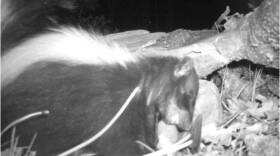There’s something different about the streetlights in Flagstaff, Ariz., these days. They’re part of an experiment to find a lightbulb that won’t outshine the town’s starry night skies.
There’s something different about the streetlights in Flagstaff, Ariz., these days. They’re part of an experiment to find a lightbulb that won’t outshine the town’s starry night skies.
Flagstaff is the world’s first International Dark Sky City. It passed its first ordinance to combat light pollution in 1958. Back then, low-sodium streetlamps with an amber glow were the best technology.
More recently, Flagstaff and many other cities have switched from low-sodium to Light Emitting Diode, or LED lights. The new fixtures last longer and can be more energy-efficient—but they also glare with bright white light that washes out the stars.
The city’s planners and engineers have teamed up with astronomers to find a solution. They installed five different types of LEDs in neighborhoods around town, including along historic Route 66. The lights are shielded so they beam down onto streets and sidewalks, not up into the sky. They come in various sizes and styles, and mimic the comfortable yellow glow of the old sodium lamps.
This so-called “warm light” emits in a narrow range of the color spectrum, protecting the night sky from unwanted glare. White LEDs, on the other hand, emit in the entire spectrum, including blue—bad for skyglow at night, and possibly even the health of people and wildlife.
The results of the “Street Lighting for Dark Skies,” or SLEDS, experiment will guide planners when they replace Flagstaff’s three thousand-plus lightbulbs. The goal is to protect dark skies for astronomers at nearby world-class observatories—and for everyone who cherishes star-filled skies.









